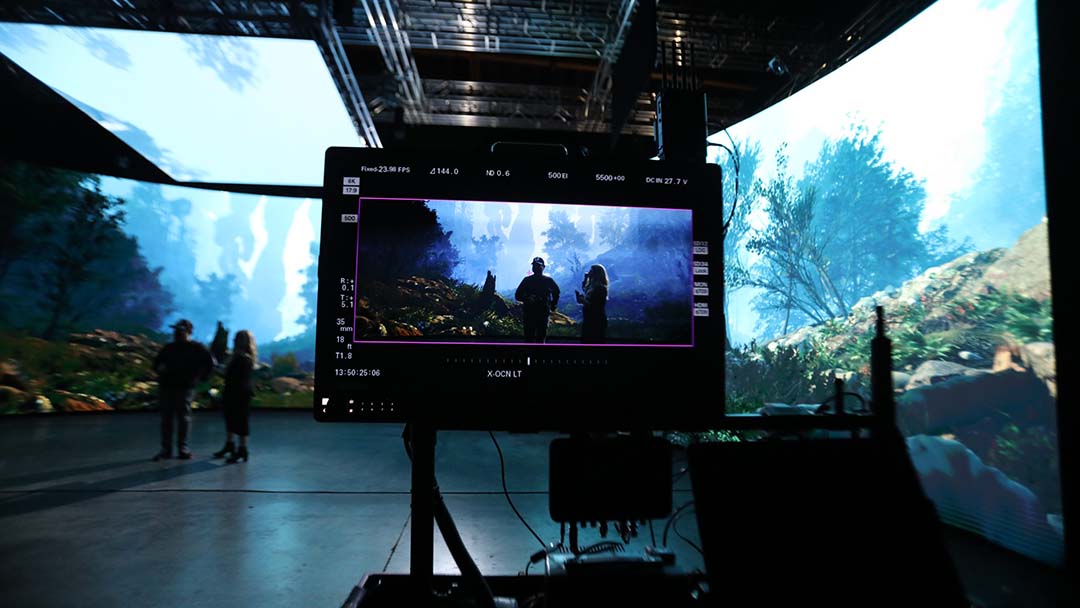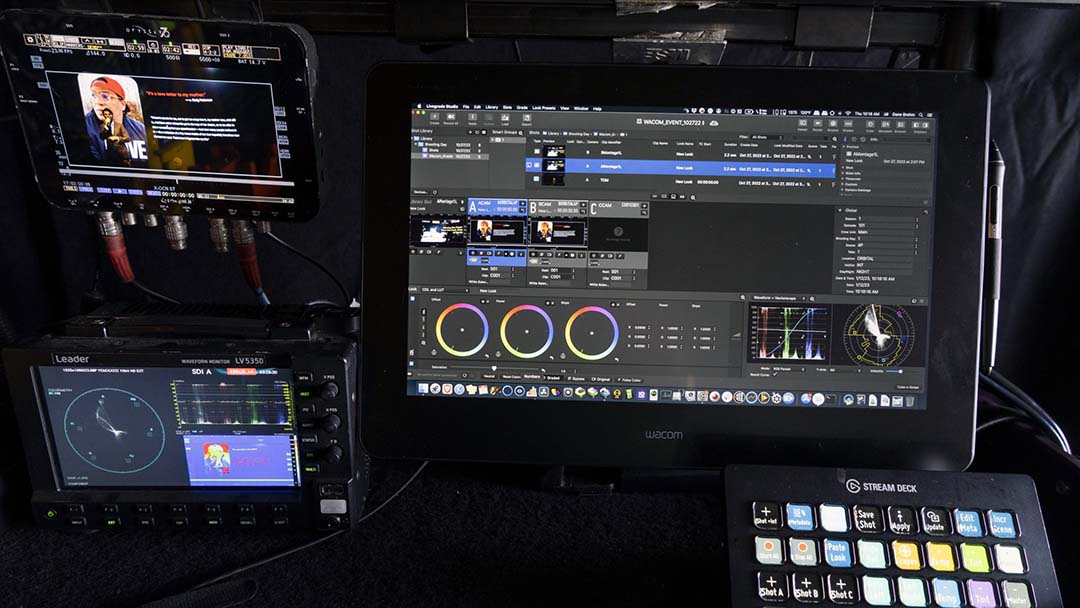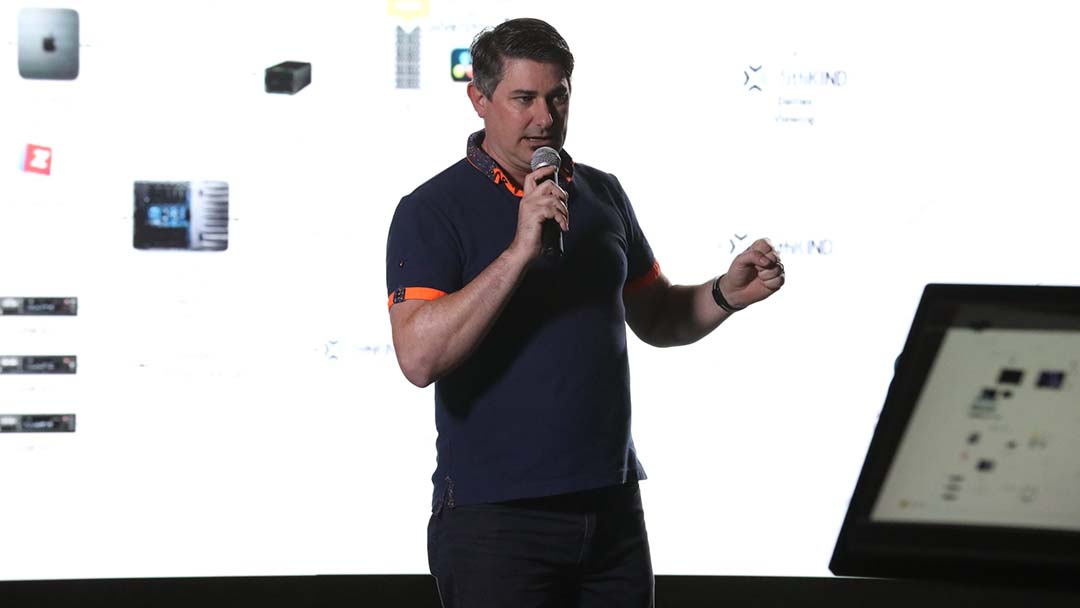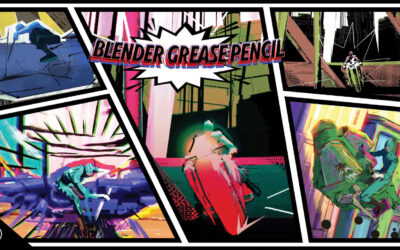As filmmaking evolves, the way creators use Wacom products continues to evolve too. For years – decades even – Wacom devices have been used in pre-production for concept art, storyboarding, animation, and 3D modeling, as well as in post-production for editing, VFX, and more.
The way films and TV shows are made in the modern day have changed dramatically. Not only has the workflow changed to a cyclical one, but the technology used behind the scenes on set for cinematography has also transformed. This can be seen especially in the world of virtual production, where more and more decisions for lighting, contrast, and other changes are now being made on-set in real-time by directors and cinematographers.
Wacom is excited to partner with creators who are pushing the boundaries and using our products in ways they’ve never been used before. One of those partners is Dane Brehm, a Production Technologist at Cintegral Tech, and an ICG Digital Imaging Technician (DIT) who has been experimenting with using a Wacom Cintiq Pro 27 on-set as part of a DIT cart setup.
Below, hear Dane speak at NAB 2023, along with Wacom’s Arvind Arumbakkam, about the next generation of DIT carts, and how the Wacom Cintiq Pro fits into the equation.
He’s known for working on projects like Marvel’s Wandavision on Disney+, Amazon Prime’s Hunters, James Cameron’s Avatar 3, and Three Billboards Outside Ebbing, Missouri.
Wacom Cintiq Pro 16 for DITs
The DIT role is a specific but integral one to the moviemaking process; they advise the Director of Photography (DP) during the lighting process to maintain the creative look of a given scene or lighting environment.
On-set, DITs rely on the technology on their DIT cart to keep things running smoothly – with each cart having things like a computer, monitors, data management tools, and battery backup. Dane describes the DIT cart as the “central hub of decision-making” for the DP, allowing them to make their Shoot Day.

The Cinematographer tasks the DIT with maintaining, cataloging, and shepherding the show’s onset image pipeline. This allows for the Dailies Lab to deliver the well-crafted look of the show to Editorial and VFX to watch for months, if not years, as they polish, add effects, and move the footage toward the final product that end-users will watch at home or on the big screen.
Traditionally, DITs “thrive or die” by color-critical monitoring for their DPs, which costs upwards of $15K-65K for proper HD/4K OLED HDR monitoring. For their Livegrade or Dailies creation they integrate a 2nd or 3rd IPS style GUI Monitor dedicated to monitoring Color Wheels, GUIs, CDLs or Scopes like Waveforms, RGB Parades, and FalseColor to judge exposure with repeatable results.
These GUIs, which are 13-15”, often lack professional color critical image quality, touchscreen feedback, and smart accessories like you’ll find on a Cintiq Pro — all of which increase ergonomics and enhance task speed.

When using the Cintiq Pro 16 as an alternative, Dane described the workflow as allowing for “more efficiency of movement when completing color tasks – which is an important aspect of workflow as a DIT. Typically they have a short window of time to tweak things between each lighting setup to accomplish the ‘look’ when minutes count in helping the DP make their day.”
What makes a Wacom Cintiq Pro 16 a great fit for use on-set on a DIT cart? The device’s slim footprint and tactileness makes it a perfect fit when space is at a premium. At a compact 16” size, it also provides a tangible feel that’s fun and intuitive to use. A DIT can use the Pro Pen 2 to highlight and select areas for the Director of Photography to give feedback on or to move the Color wheels during the lighting process.
“The Cintiq Pro fulfills the needs for DIT Professionals because it allows the user to accomplish multiple tasks like Livegrading – we use Pomfort Livegrade Studio, Camera Control, Data Management, touch surfaces, and most importantly the Pro Pen,” adds Dane.

During Wacom’s technology showcase at Orbital Virtual Studios in October 2022, Dane detailed the on-set value of the Wacom Cintiq Pro as, “I have two minutes with a Director or Cinematographer…to find out yes, no, maybe – do you like this? Is it too bright? With a Wacom screen, I’m able to, in a quick motion, create and save a look, name it, and then push that along and save it, and move to the next shot.”
The DIT role contributes hugely to this step of the filmmaking process – getting opinions from the people that matter and letting people get out the door for the day.

At Wacom, we’re focused on creating products like the Cintiq Pro 16 and new Cintiq Pro 27 that make the lives of on-set film and TV professionals easier, as we have with animators and illustrators for years.
To learn more about Dane’s work as a Digital Imaging Technician, you can follow along with Cintegral Technologies at their website, or on Instagram or LinkedIn.





